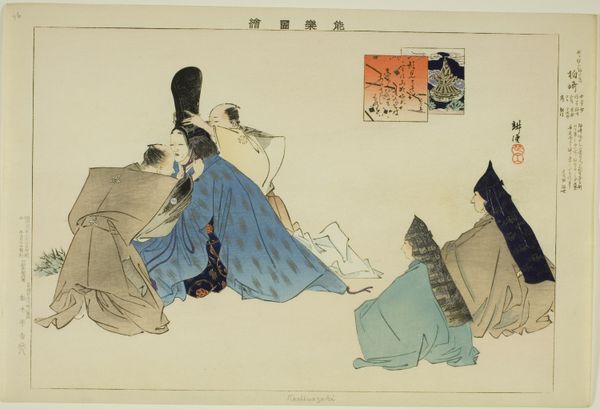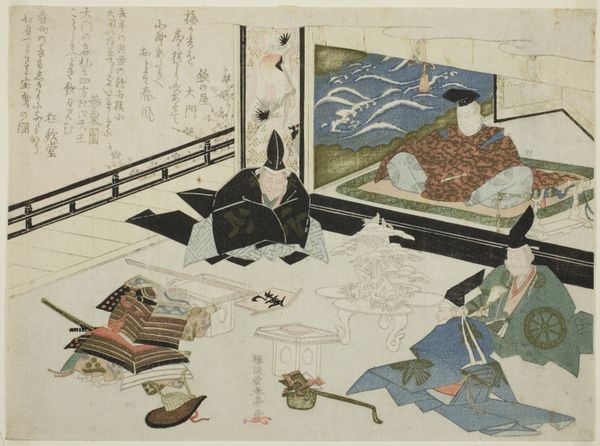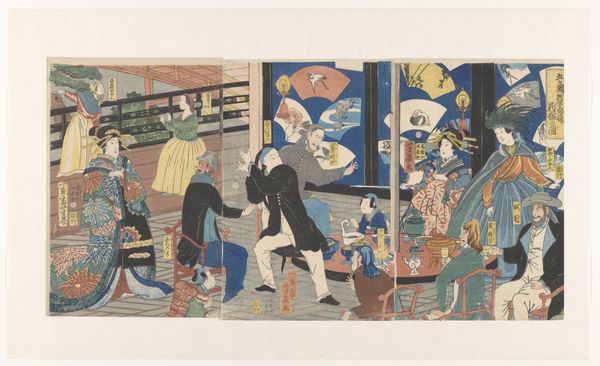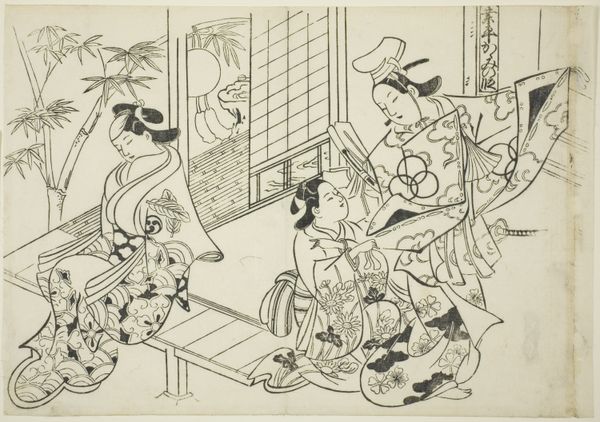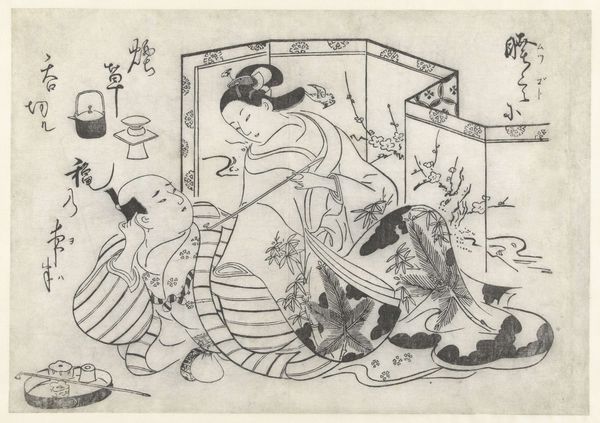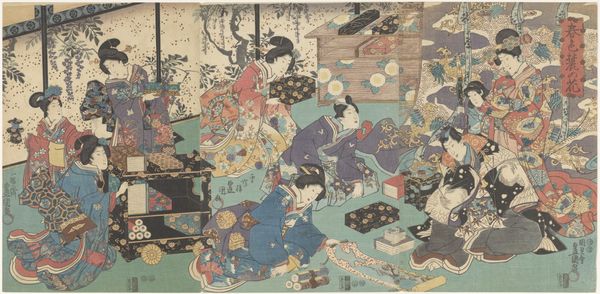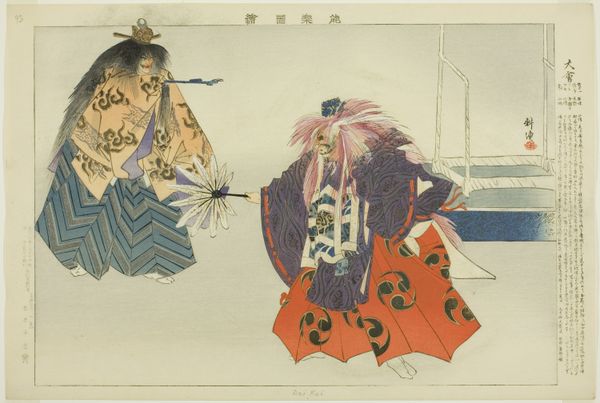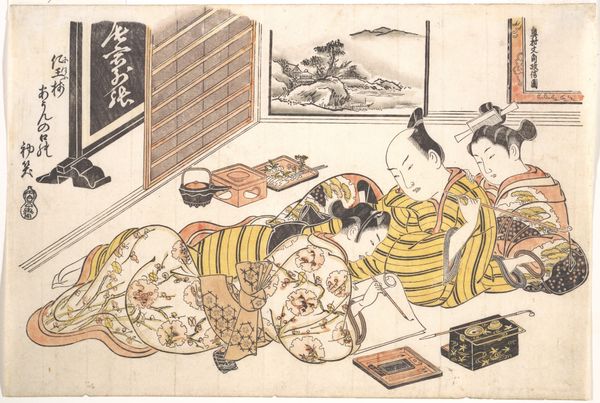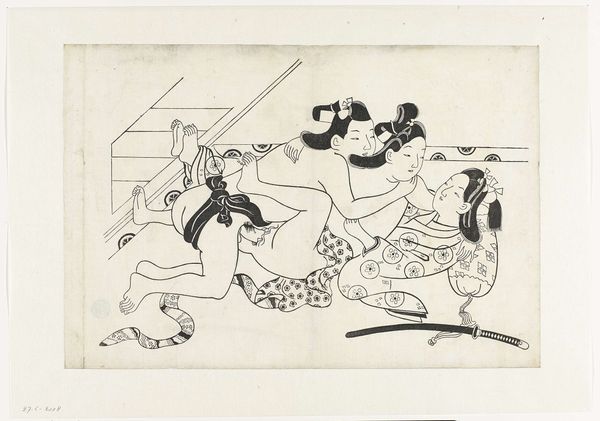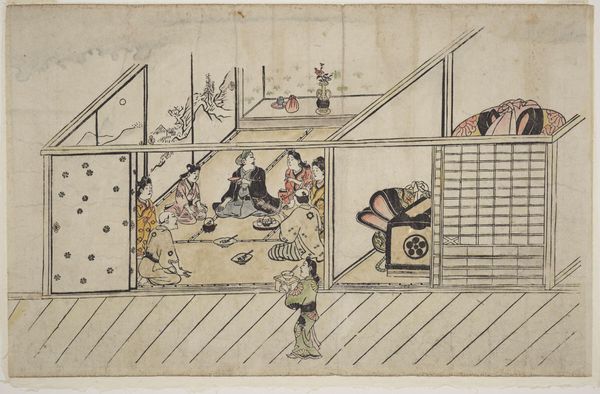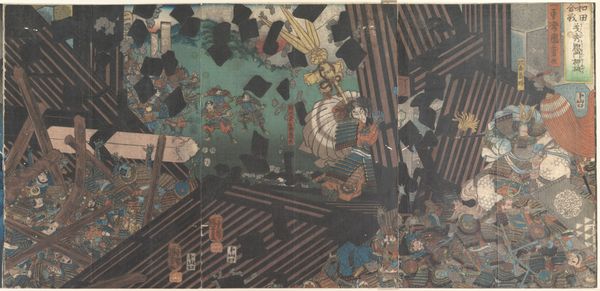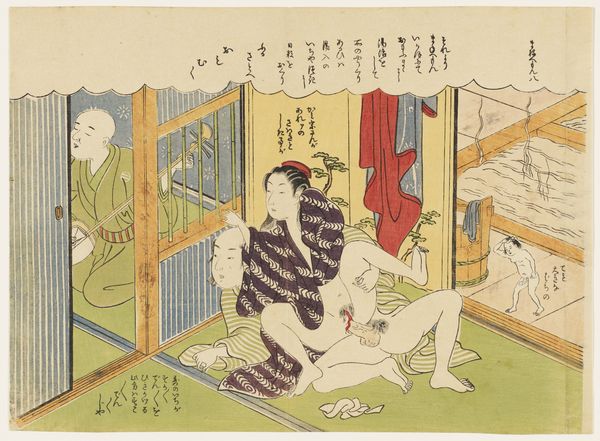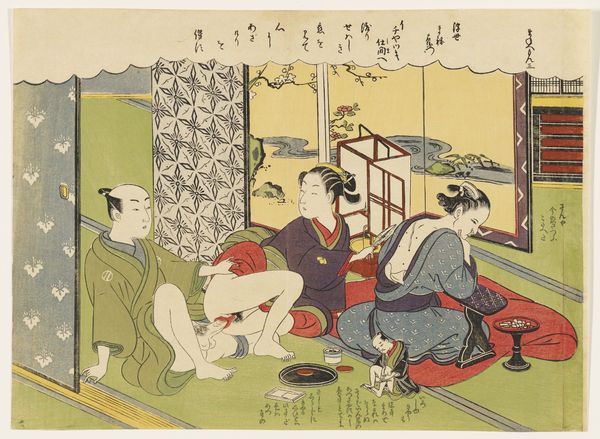
Properties, from the series "Pictures of No Performances (Nogaku Zue)" 1898
0:00
0:00
Dimensions: Approx. 25.2 × 37.4 cm (10 × 14 4/3 in.)
Copyright: Public Domain
Curator: Looking at Tsukioka Kōgyo’s “Properties, from the series "Pictures of No Performances (Nogaku Zue),” a woodblock print from 1898 held here at the Art Institute of Chicago, what strikes you initially? Editor: It’s rather unsettling. There’s something stark and impersonal about the display of these noh masks and costumes, like remnants left behind or items in a theatre prop room between acts. Curator: I’m drawn to that starkness. It underscores the artifice inherent in noh theatre. Kōgyo wasn't just capturing performances but documenting the entire system that produced them. By isolating these objects – the masks, the elaborate costumes – he forces us to consider them as commodities, things crafted and employed for a very specific cultural performance. Editor: That performance also deeply embedded within a rigid societal framework, I think. The masks in particular speak to how identity itself can be constructed and performed within prescribed social roles, literally “masking” lived experiences. Who made these objects, and how do their histories inform the very exclusive world of noh? Curator: The production of these masks and costumes often involved generations of skilled artisans, yet their labor is rarely highlighted. We consume the artistry, but we rarely consider the material conditions that allow these objects to even exist. The type of wood used for the masks, the silks and dyes for the costumes - all of these choices dictated accessibility to artistic creation. Editor: Absolutely, and considering the socio-economic backgrounds of both the performers and the audiences – generally elites – the art becomes emblematic of a stark class divide. There's a power dynamic inherent in the act of spectatorship, especially when linked to culturally specific and deliberately exclusive performances. The image gives us a glimpse behind the scenes of what it really took to put this "high" art form together. Curator: So, perhaps this print isn’t just a “picture of no performances,” as the series title suggests, but an invitation to look deeper into the performance of culture itself. Editor: A way, maybe, to deconstruct and democratize art appreciation by emphasizing social production, historical context, and questioning power structures. Curator: Indeed. By centering our focus on what creates the illusion, the labor involved, and the access granted, we see a much fuller picture. Editor: This image reminds me that everything on view in a museum is the result of material processes that speak to so many issues: economy, history, and politics.
Comments
No comments
Be the first to comment and join the conversation on the ultimate creative platform.
